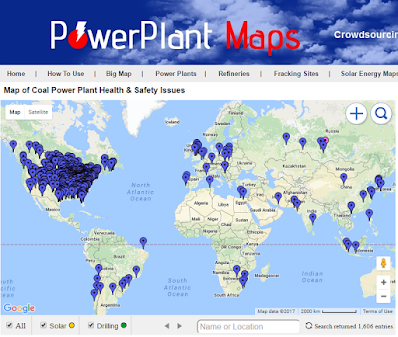Map of Coal Ash Ponds Around The United States
Coal ash ponds can pose various hazards to the environment and human health. Here are some of the potential hazards associated with coal ash ponds:
Water Contamination: Coal ash ponds often contain large volumes of wastewater that can be contaminated with heavy metals, such as arsenic, mercury, lead, and selenium. If not properly managed, these contaminants can leach into groundwater or nearby surface water bodies, posing risks to drinking water supplies and aquatic ecosystems.
Air Pollution: Wind can carry fine particles and dust from coal ash ponds, leading to air pollution. These particles may contain toxic substances, including heavy metals and other pollutants. Inhaling these airborne particles can potentially harm human health, especially for individuals living in close proximity to the ponds.
Dam Failures and Spills: Coal ash ponds are typically large impoundments that store coal combustion residuals (CCR). If the structural integrity of the pond is compromised, such as through dam failures or breaches, it can result in significant spills and releases of coal ash slurry into nearby water bodies. These incidents can cause immediate ecological damage, contaminate water sources, and pose risks to public health.
Groundwater Contamination: Coal ash ponds are designed to store coal ash slurry, which often contains a range of contaminants. If the ponds are not adequately lined or managed, the contaminants can seep into the underlying soil and groundwater, potentially contaminating drinking water supplies and causing long-term environmental impacts.
Land and Soil Contamination: Improper management and disposal of coal ash can lead to land and soil contamination. If coal ash is used for landfills or as fill material without proper controls, it can release pollutants into the surrounding environment, potentially affecting soil quality and vegetation.
To mitigate these hazards, proper management and regulation of coal ash ponds are essential. Practices such as lining the ponds to prevent seepage, implementing monitoring systems, adopting proper closure methods, and transitioning to safer storage and disposal options can help reduce the risks associated with coal ash ponds. Government regulations and enforcement play a crucial role in ensuring the safe handling, storage, and disposal of coal ash to protect human health and the environment

